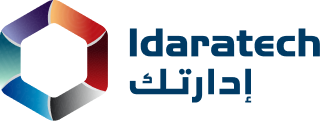. Are you looking for a digital clock in and out system at your workplace?
Managers and HR must keep track of and oversee employee work hours even though we may no longer use paper timesheets. It is crucial to keep track of employees’ hours so you can increase team productivity and make appropriate payments. Fortunately, there is a technology that makes tracking employee time easier: an employee time clock.
Every manager’s worst nightmare is to go into the office and face a slew of time attendance forms that need to be sorted. It takes a lot of energy and time to sort through the enormous amount of paper, which means you can’t complete your task during that period.
Fortunately, a lot has changed in the past ten years, and there are many new and better ways to track time and control employee attendance. Clock in and out system applications are the secret phrases.
Everything you need to know about what is clock in and clock out system and why it is required for your organization will be covered in this article. In addition, we’ll highlight the top advantages of implementing a digital clock in and out system.
What is a Digital Clock In and Out System?

A clock in and out system allows team members to log their work hours and breaks; They can record their work hours, holidays, vacations, and overtime using clock-in/clock-out systems. These systems are typically desktop or mobile apps. Organizations can control team members’ workloads and keep track of the hours they put in due to these tools.
You can easily track attendance with a dependable clock in and out system. For instance, you can view employees’ arrival and departure times and the length of their breaks.
A clock-in clock-out system can exist in many different forms in real life, such as:
- Time tracking software
- Manual time tracking
- Electronic timesheets
- Web-based platform (e.g., apps or browsers).
According to figures from 2023 on time monitoring, up to 25% of all employees do so with physical spreadsheets. The capabilities of analogue time-tracking are, at best, obsolete and limited. In other words, a physical spreadsheet is limited in what it can accomplish; for instance, it is unable to track the level of productivity of your staff members.
You’ll probably require a computerized clock in and out system to track productivity effectively. Let’s investigate the reason for this.
Advantages of Digital Clock In and Out System

| S.No. |
Advantages |
Disclaimer |
|
1. |
Effortless Scheduling and Shift Management |
With the help of the clock in and out system, it is simple to create and manage tasks, shift plans, and keep track of staff. This program can allocate and keep track of workloads across several departments. |
| 2. |
Modern Systems Eliminate Human Error |
Errors are less common in current clock-in clock-out systems since they are automated. Digital time tracking software and rota planners deliver more accurate payroll records with less inconsistent data. Additionally, buddy punching—when one person clocks in or out for another—is eliminated by computerized time tracking. |
|
3. |
Real-Time Data & Reporting |
Modern clock in and out systems provide real-time data and reporting, giving managers an understanding of the schedules and productivity of their staff. Automation enables managers to pinpoint problems and implement adjustments in real-time, enhancing staff management and productivity. |
|
4. |
Enhanced Employee Experience |
Employees have more control and visibility over their hours due to modern clock in and out systems. As employees feel empowered to regulate their schedules, this can help foster a better work atmosphere. |
|
5. |
Remote Clock In and Out System options |
Employees may clock in and out from anywhere with an internet connection thanks to the possibilities for remote employee time clocks that are included in modern clock in and out systems. Those who operate remotely or in the field and may not have access to a real clock-in and clock-out device will benefit from this strategy. |
1. Increased productivity
Payroll processing can be complex when done manually. You need time to review every employee’s attendance record from the beginning. You won’t be able to guarantee the correctness of the data collection, and this process may take several hours or even days. Using a digital time attendance tool helps automate time tracking, save time, improve data accuracy, and boost productivity.
2. Improved security
A digital attendance software for employees is much more reliable and secure than a manual one. Additionally, it makes the system more dependable while protecting data. Additionally, many businesses base compensation on attendance and call for a minimum number of hours an employee works to qualify for promotions and bonuses. As a result, they have increased security resulting in better record accuracy and equitable employee compensation.
3. Data for making business decisions
Real-time data from time-clock and attendance apps helps the business in compiling metrics that can be used to assess and upgrade the present systems throughout the organization’s many departments. The employer can track and authorize employee overtime, for instance, with the help of EasyWork’s overtime alert tool.
4. Increased accountability and accuracy
Employees must manually submit their daily hours worked, increasing the possibility of erroneous time monitoring. Employees’ working hours are automatically recorded with just one click when using the digital clock-in feature. Employees must select “Clock In” when they begin working and “Clock Out” when their shift is complete. Their working hours will be calculated and stored automatically by the system. As a result, the attendance system is more accurate.
5. Enhanced employee engagement and empowerment
The Employee Attendance App empowers customers by letting them access their information without going through the HR department. Due to the low possibility of human error, it also improves the accuracy of the attendance system. As a result of knowing that they won’t waste any of their working hours, the employees feel more at ease and secure. It is crucial to keep in mind, nevertheless, that it is the duty of employees to clock in and out at the proper intervals for their shifts. If they do not do so, major attendance concerns may arise.
6. Enhanced efficiency
Modern clock in and out systems allow users to effortlessly and swiftly clock in and out with the least effort, doing away with the necessity for manual timesheet entry and saving payroll and human resources departments considerable time. Furthermore, managers can quickly examine the hours put in by their team members with the help of real-time data, which enables them to decide on staffing and budgeting more rapidly.
7. Cost savings
Businesses can save money by investing in a contemporary clock-in/clock-out system. Companies can cut labor and overhead costs by removing manual timesheet processing and automating payroll procedures. Modern technologies also make it simple for companies to keep track of employee hours and more effectively handle overtime and other payroll costs.
8. HR and payroll departments save time.
Another advantage of a modern clock in and out system is that it saves HR and payroll departments time. Data entry is not required with a digital approach because calculations and data recording are performed automatically. Integrations between operations, payroll, and HR free up the HR and payroll departments to work on other projects and lower the possibility of human error.
9. Employee self-service features
Employees can view their schedules, request time off, and clock in and out using a mobile app that modern clock in and out systems provide. This eliminates the need for HR or payroll departments to enter the employee’s time manually. Employees are given more control over their schedules, and the workload of HR and payroll departments is reduced by avoiding these back-and-forths between staff members and HR professionals or business owners.
10. Customizable settings for various business requirements
Modern time clock systems allow managers to configure the system to meet their unique demands. These systems can be customized to suit various corporate needs. This includes recording employee breaks, putting up notifications for overtime, and setting up different pay rates for multiple employees.
Why Does Your Organization Need a Clock-in-Clock-out System?

At this point, a cynical but well-intentioned reader might inquire: I’ve used actual spreadsheets for a long time. So, do I need an employee clock at this time?
Yes, it is a quick response if you want to boost responsibility and productivity.
According to a recent Forbes article, employees who keep track of their hours worked help to lower payroll errors, costs, and compliance difficulties. According to a report, around 60% of businesses with remote employees use applications to monitor employee productivity.
According to the report, your team might be setting itself up for failure without a focused employee clock-in mechanism.
To that end, a few industries where clock in and out system are pretty beneficial include:
- Advertising and marketing,
- Computer and IT,
- Construction,
- Business and finance,
- Manufacturing,
- Legal, and plenty of others.
Conclusion
Regarding accurate time tracking, digital and biometric clocks are both excellent tools. However, there are certain distinct advantages to using a software-based clock in and out system. The device you use will rely on your requirements, the size of your team, and your budget.
Idaratech HR is a comprehensive application that tracks time correctly, increases team productivity, and generates payroll.
So why not sign up for a 14-day free trial right now?
FAQ’s
Question 1: What exactly is a digital clock in and out system?
Businesses can track and keep track of their employees’ attendance and working hours by using a digital clock-in and clock-out system. It switches out outdated paper-based procedures with digital technologies for more accuracy and efficiency.
Question 2: Why should my place of business consider installing a digital clock in and out system?
Digital clock-in and clock-out systems have several advantages, including accurate attendance tracking, decreased errors, streamlined payroll processing, better compliance with labor laws, and increased effectiveness in managing staff schedules.
Question 3: How much does implementing a digital clock in and out system cost?
The system features, the number of workers, and the vendor affect costs. There are setup fees upfront, hardware expenditures (if necessary), and continuing subscription or licensing charges.
Question 4: How much time does it take to set up the system?
The intricacy of the system and the size of your organization will affect how long it takes to implement. Depending on the customization and training required, a startup may be able to set up the system in weeks, while larger businesses may need more time.
Question 5: What are the probable difficulties in deploying such a system?
Typical difficulties include:
- Employee resistance to change.
- Implementation-related technical problems.
- Guaranteeing data accuracy.
- Integrating the system with current workflows.

